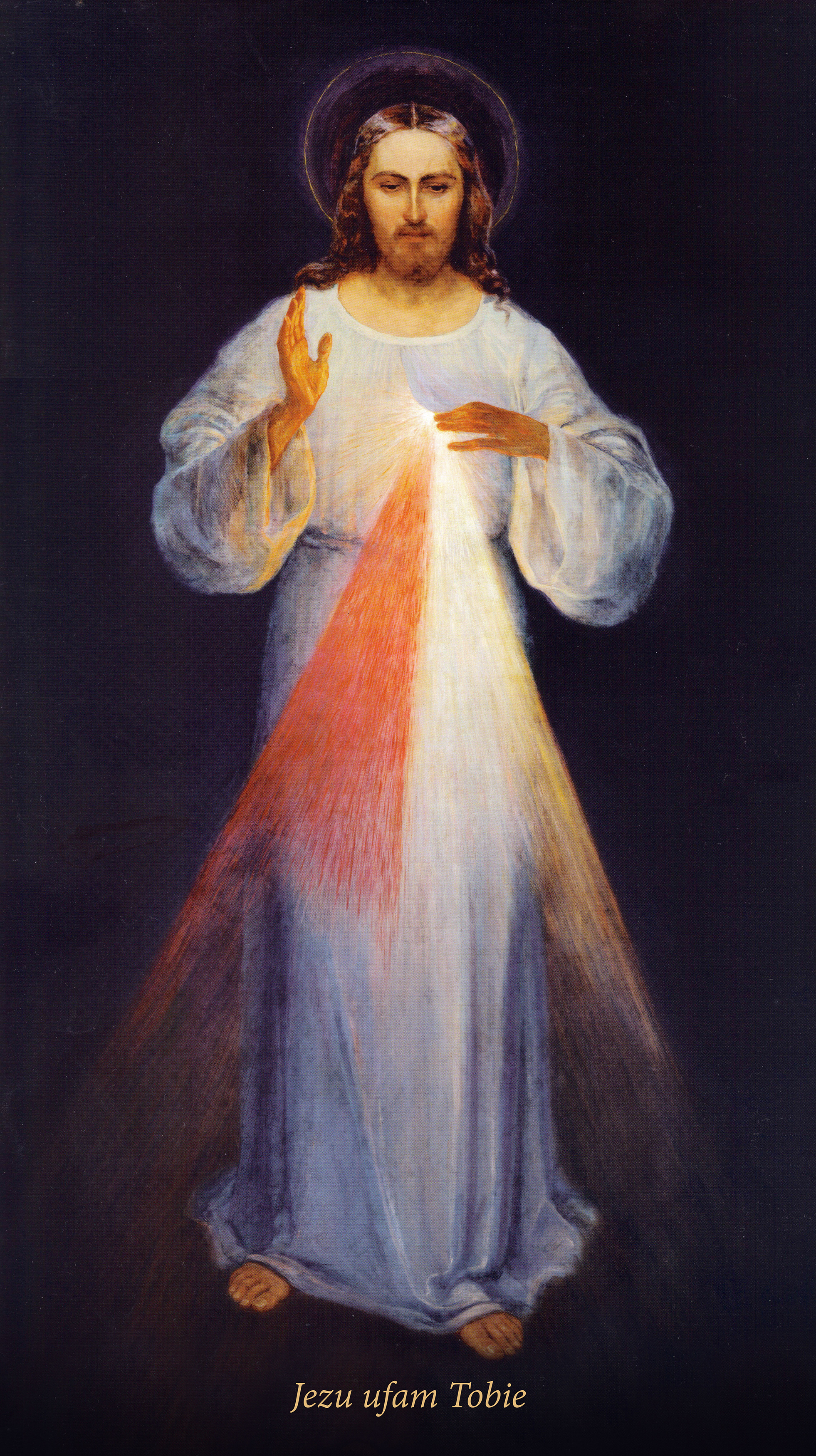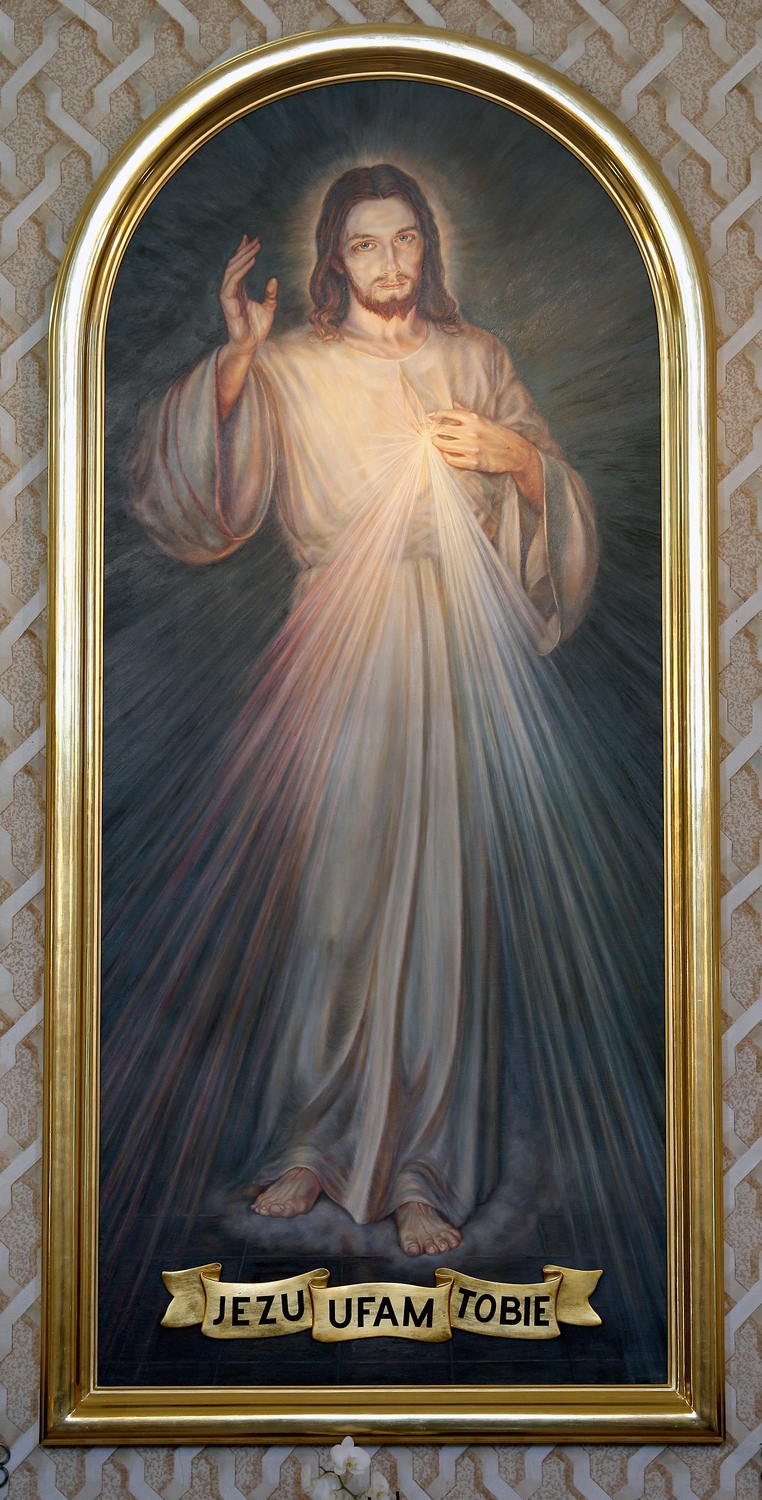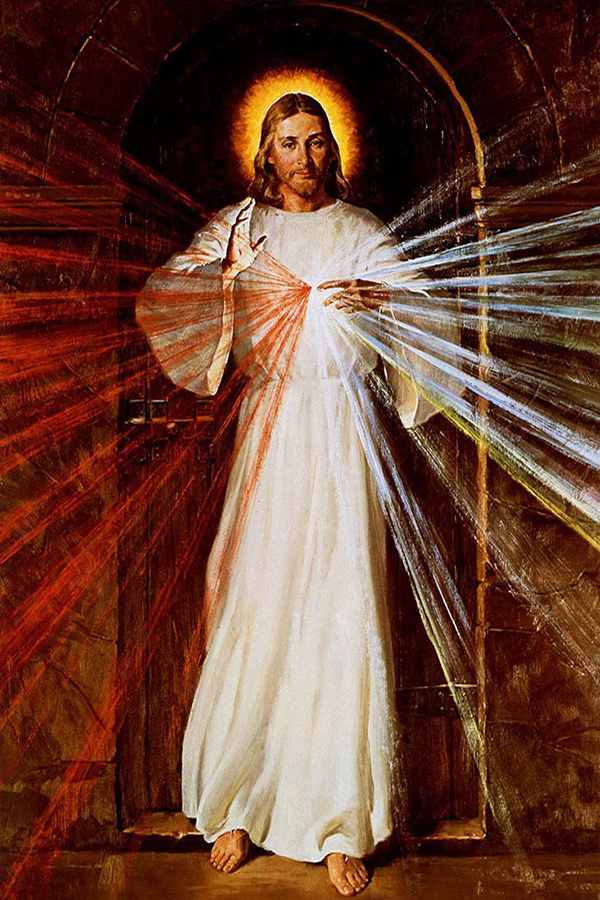And which image did St. Faustina approve?The Divine Mercy images sold by many Catholic stores can be confusing. There are typically three different images of Jesus based on St. Faustina’s revelations, but it is hard to discern which one is the original or which one is the most faithful to Jesus’ instructions to St. Faustina.
Was there an image to which St. Faustina gave her stamp of approval?

During St. Faustina’s lifetime her spiritual director, Venerable Michael Sopocko, commissioned an artist to paint an image of Jesus based on St. Faustina’s description. Sopocko relates in a letter how he hired artist Eugene Kazimirowski and what St. Faustina thought of the end result.
Upon my request Mr. Eugene Kazimirowski began the painting of the image on January 2, 1934. Sister Faustina of blessed memory with the permission of the Superior, Mother Irene, came once or twice a week to the painter’s studio (in the company of another sister) and imparted instructions, how this image is to look. For several months the painter was unable to satisfy the author, who became sad on that account, and it was at this time that she wrote in her diary: “Once when I was at that painter’s, who’s painting this image, and saw that it is not as beautiful as Jesus is, I became very sad, but I hid that deep in my heart. When we left the painter, Mother Superior remained in the city to settle various matters, but I returned home by myself, immediately I made my way to the chapel and I had a good cry. I said to the Lord: ‘Who will paint You as beautiful as You are?’ Of a sudden I heard the words: ‘not in the beauty of the color, nor of the brush is the greatness of this image, but in my grace.'”
St. Faustina gave further instructions on how the artist could improve his painting but the image never won over her heart. It was imperfect and while the Kazimirowski is the original image, it didn’t satisfy St. Faustina’s wishes.

In 1943, about 10 years after the original image was painted, another artist visited the convent. This was five years after St. Faustina’s death and the artist, Adolf Hyla, wanted to paint an image in thanksgiving for being preserved from death during World War II.
The sisters at the convent suggested to him that he should paint the image of Divine Mercy and gave him the original image by Kazimirowski, along with a description St. Faustina wrote. Hyla gave it his own interpretation and the image was placed in one of the sisters’ convents.
After World War II the Kazimirowski image remained in a church under USSR occupation, and because of Soviet persecution, it was taken into hiding. For many decades the Kazimirowski image was unknown to the world and the Hyla interpretation became the standard across Europe and the United States.
Later on a third image grew in popularity by an American artist Robert Skemp. This particular image is popular in the Philippines and was painted in 1982, based on the Hyla image.

Over the years countless other artists have attempted to follow St. Faustina’s instructions, giving their own interpretation of the Divine Mercy image. Which image is the best and follows her directions the closest? Each has its own merits and each has its own faults.
In the end, as in the case of other attempts to represent heavenly realities, all images inevitably fall short. We must return to the words of Jesus to St. Faustina, “not in the beauty of the color, nor of the brush is the greatness of this image, but in my grace.”



